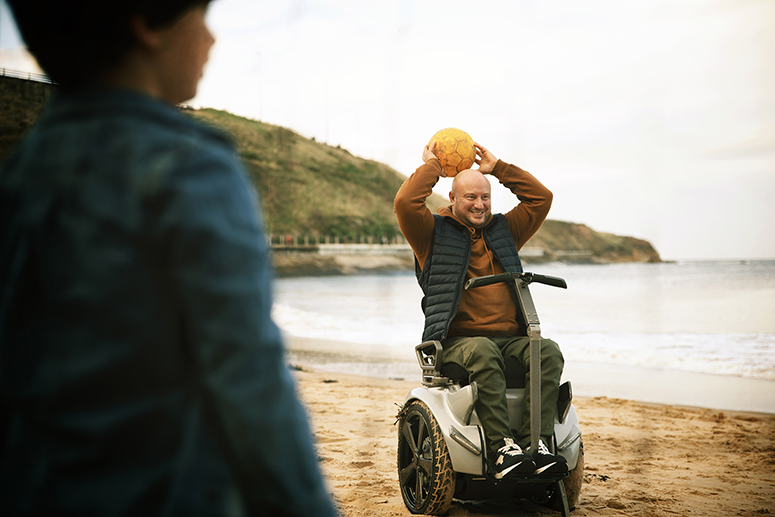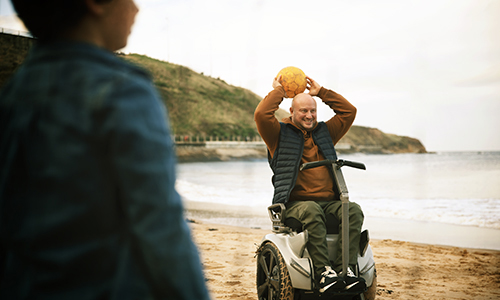Finding your ideal physical activity is essential to help you manage a healthy weight and keep your spirits high. Explore sport and fitness guidance if you have a spinal cord injury.
You worked hard to keep fit before your spinal cord injury. Or maybe you weren’t as active as you would have liked, but now have the time and desire to work up a sweat. The good news is that there are still many ways to stay active. Sports and fitness can still be a big part of your life.

Before your injury, you may have participated in a sport or exercise activity based on what you enjoy and your unique talents – your fitness and sports “sweet spot”, if you will. The need to find that ideal activity is no different after a spinal cord injury. Once you find the best sport for you – something you enjoy and can participate in consistently to keep you fit – it can be a real boost to your quality of life.
What’s your fitness “sweet spot”?
After a spinal cord injury, there are still many activities that you can participate in to stay fit. These include – but are not limited to – basketball, rugby, rowing, sailing, swimming, curling, table tennis, badminton, tennis, weightlifting, fencing, golf and skiing.
When looking for that ideal way to stay active, consider these factors:
· Past experience: Did you participate in a sport or form of exercise before your injury that you can still do with some potential adjustments, modifications or special equipment?
· Lone wolf or team sports: Do you prefer to take part in a sport as an individual or would you rather be part of a duo or team?
· Your motivation: Perhaps you have a strong competitive spirit that you need to satisfy in a league or team environment. Or perhaps you just enjoy moving and keeping fit, so non-competitive activities are more your speed.
· Traditional or “out there”: There are many conventional sports you can participate in, such as basketball, tennis and swimming. But there are more adventurous options that may involve travel that you can explore too, such as skydiving, scuba diving and many water sports.
· National association support and resources: Depending on the sport or activity that interests you, there may be resources that can help you get started. For instance, the LTA has wheelchair programmes and tournaments throughout the country.
· Talk to fellow wheelchair athletes: Find and connect with others who have participated in a sport or activity you’re interested in taking on. They may be able to guide you to the right equipment and resources, as well as instructors and coaches in your area who can help you get started.
You won’t find your fitness sweet spot until you try
There are many opportunities to be active after a spinal cord injury. Finding your fitness sweet spot may take some trial and error. The important thing is that you get out there and give it a go. You may not be a natural or enjoy the first sport or exercise you try, but if you stick with it, you’ll find the perfect activity that helps you get fit and have fun!
References:









